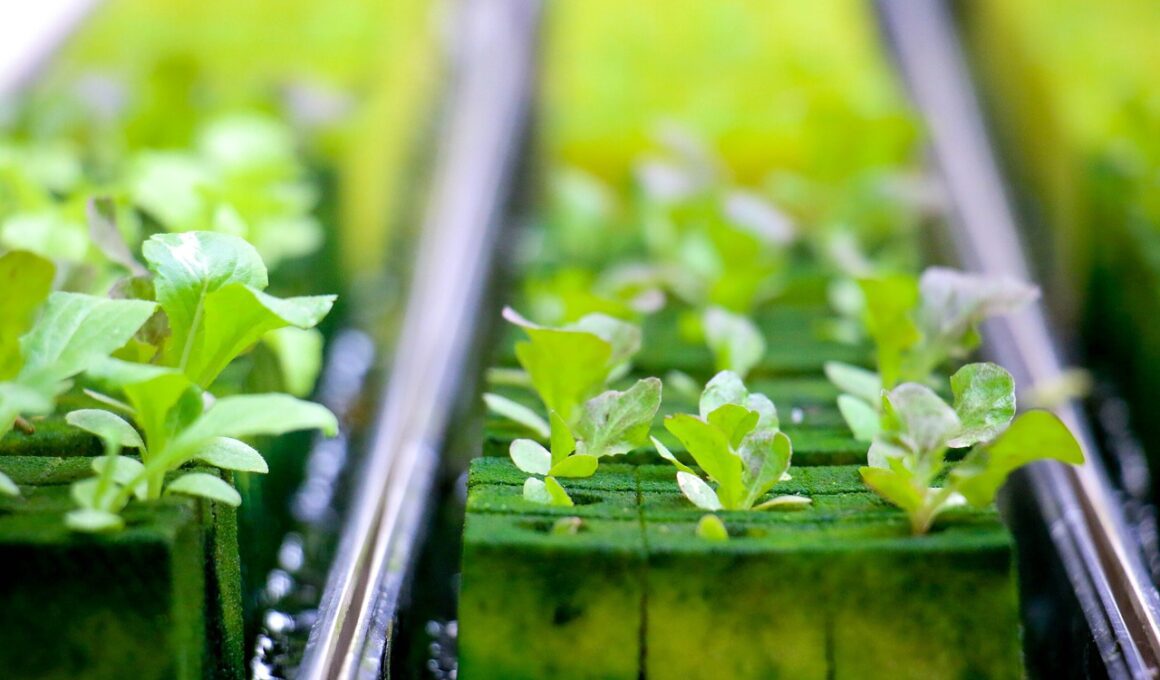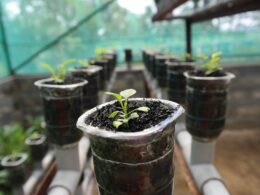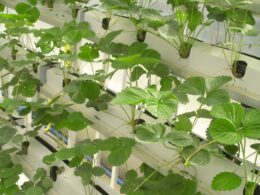Are you interested in growing your own fresh produce but don’t have a lot of space or time for traditional gardening? Have you heard of the Dutch bucket system?
It’s a hydroponic growing method that’s easy to set up and maintain, making it a great option for beginners or those with limited space.
The Dutch bucket system is a type of container gardening that uses a series of buckets filled with a growing medium and nutrient-rich water to grow plants. This hydroponic system is highly efficient and allows you to grow a variety of crops in a small space without the use of soil.
Plus, it eliminates the need for weeding and other time-consuming tasks associated with traditional gardening, making it a great option for those looking for a low-maintenance way to grow their own food.
Overview of Hydroponic Growing
If you’re looking for a new way to grow plants that doesn’t involve soil, you might want to learn about hydroponic farming. Hydroponic farming is a method of growing plants without soil, using a nutrient-rich water solution instead. This method is becoming more popular due to the many benefits of soilless gardening.
One of the benefits of hydroponic farming is that it allows you to grow plants in a smaller space. Since you’re not using soil, you don’t need as much room for the plants to spread out their roots. This also means that you can grow more plants in a smaller area, making it a great option for those with limited space.
Another benefit of hydroponic farming is that it allows you to have more control over the growing environment. You can adjust the nutrient levels in the water solution to ensure your plants are getting the right amount of nutrients. You can also control the temperature, humidity, and lighting to create the optimal growing conditions for your plants.
With hydroponic farming, you have the power to ensure your plants are getting everything they need to thrive.
How the Dutch Bucket System Works
The plants in a Dutch bucket system are grown in individual containers that receive a constant flow of nutrient-rich water. This allows them to thrive and produce an abundance of fresh produce. The water circulation system in a Dutch bucket system is designed to provide the plants with the exact amount of nutrients they need, which helps to promote optimal growth.
One of the key features of the Dutch bucket system is the way it supports the plants. Each plant is placed in its own bucket, which is filled with a growing medium such as perlite or coconut coir. The bucket is then connected to a central reservoir that provides a constant supply of nutrient-rich water. The plants are able to grow upwards and outwards, supported by the growing medium and the water flow.
The Dutch bucket system is an excellent way to grow a wide range of plants, including fruits, vegetables, and herbs. It’s easy to set up and maintain, and it provides a constant supply of fresh produce. Whether you’re an experienced gardener or just starting out, the Dutch bucket system is a great way to get started with hydroponic gardening.
Advantages of the Dutch Bucket System
You’ll love the benefits of this innovative hydroponic technique. The Dutch Bucket System offers a number of advantages over traditional soil-based agriculture.
One of the biggest benefits is long term sustainability. Unlike traditional farming, the Dutch Bucket System doesn’t require large amounts of water or fertilizers. Instead, the system recirculates water and nutrients, reducing waste and minimizing the environmental impact.
Another major advantage of the Dutch Bucket System is crop yield. Because the system is designed to provide plants with a constant supply of water and nutrients, plants can grow faster and produce more fruit than they would in traditional soil-based agriculture. This means that farmers can produce more food in less space, which is especially important in areas with limited arable land.
Overall, the Dutch Bucket System is a great choice for anyone looking to grow crops in a sustainable and efficient way. Whether you’re a small-scale farmer or a large commercial grower, this hydroponic technique can help you increase crop yields, reduce waste, and minimize your environmental impact. So if you’re looking for a way to grow more food in less space, consider giving the Dutch Bucket System a try.
Setting Up a Dutch Bucket System
When setting up your Dutch Bucket System, there are a few key points to consider. Firstly, choose a location that receives adequate sunlight and is easily accessible for maintenance.
Secondly, select a growing medium that is suitable for your plants and allows for proper drainage.
Finally, set up the reservoir and irrigation system to ensure consistent watering and nutrient delivery to your plants.
Following these steps will help ensure a successful and productive Dutch Bucket System.
Choosing the Right Location
To find the perfect spot for your hydroponic setup, scout out an area with ample sunlight and enough space for your plants to grow freely. The location you choose should also be protected from harsh winds and extreme temperatures. Here are some tips to help you choose the right spot:
- Look for a location that receives at least 6 hours of sunlight a day.
- Ensure that the area has good drainage to prevent waterlogging.
- Choose a location that is easily accessible for maintenance and harvesting.
- Consider the climate control and soil preparation needed for your specific plant varieties.
Once you have found the perfect spot, you can begin setting up your Dutch bucket system.
Remember to regularly check and maintain your hydroponic setup to ensure the best growing conditions for your plants. With the right location and care, your plants will thrive and produce a bountiful harvest.
Selecting Growing Medium
Choosing the right growing medium for your Dutch bucket system is crucial for the success of your hydroponic setup. One of the most important things to consider when selecting a growing medium is pH testing. It’s essential to choose a medium that has a pH level within the range suitable for your plants.
A pH level that’s too high or too low can negatively affect the growth of your plants, and they might not be able to absorb the necessary nutrients. Another crucial factor to consider when selecting a growing medium is nutrient solutions. The medium you choose should have the ability to retain moisture and nutrients to support plant growth.
Some common growing mediums used in Dutch bucket systems include hydroton, perlite, and coconut coir. Whichever medium you choose, ensure that it has the ability to hold enough moisture and nutrients for your plants to thrive. With the right growing medium, pH testing, and nutrient solutions in place, your Dutch bucket system will provide the perfect environment for healthy plant growth.
Setting up the Reservoir and Irrigation System
As you’re setting up your reservoir and irrigation system for your Dutch bucket system, one key factor to consider is the size of your setup. This will determine the amount of water and nutrients your plants will need to thrive. It’s important to keep in mind that the larger your setup, the more water and nutrients your plants will require.
You’ll want to ensure that your reservoir is large enough to provide enough water for all of your plants, while also allowing for proper circulation and drainage. Another important aspect of maintaining your Dutch bucket system is reservoir maintenance. This involves regularly checking and adjusting the pH and nutrient levels in your water, as well as cleaning out any debris or buildup that may accumulate over time.
Additionally, you’ll need to determine the appropriate irrigation frequency for your setup. This will depend on a variety of factors, including the type of plants you’re growing, the size and layout of your system, and the temperature and humidity of your environment. By regularly monitoring and adjusting your irrigation frequency and reservoir maintenance, you can ensure that your plants have the ideal conditions they need to grow and thrive in your Dutch bucket system.
Tips for Successful Dutch Bucket Gardening
You’ll find these tips helpful for achieving a successful and thriving garden in your Dutch bucket setup.
First and foremost, it’s important to select the right plants for your system. Choose crops that are suitable for hydroponic gardening, such as tomatoes, cucumbers, peppers, and herbs. Pay attention to the plant’s growth habits and choose varieties that are compatible with the size of your buckets.
Nutrient management is also key to a successful Dutch bucket garden. Monitor the pH levels of your nutrient solution and adjust accordingly. Keep in mind that different plants have different nutrient requirements, so it’s important to use a balanced fertilizer that includes all essential nutrients. Regularly check the EC levels of your nutrient solution, and adjust it as needed.
In addition to plant selection and nutrient management, there are a few other tips to keep in mind for a thriving Dutch bucket garden. Make sure to keep your buckets clean and free of debris to prevent clogs and disease. Be mindful of the temperature and humidity levels in your growing area, as some plants thrive in warmer or cooler conditions.
And finally, be patient and observant. Hydroponic gardening can be a bit of trial and error, so take notes and learn from your successes and failures.
With these tips in mind, you’re well on your way to a thriving Dutch bucket garden.
Frequently Asked Questions
What types of plants are best suited for a Dutch bucket system?
If you’re looking for the best plants for a Dutch bucket system, it’s important to consider their nutrient requirements. Plants that thrive in this type of system are those that require high levels of nutrients, such as tomatoes, cucumbers, peppers, and strawberries.
These plants are able to take advantage of the constant flow of nutrients and water provided by the Dutch bucket system. Additionally, they tend to have a high yield, making them a great choice for those looking to grow a large amount of produce in a small space.
Overall, if you’re looking to get the most out of your Dutch bucket system, stick with plants that have high nutrient requirements.
Can the Dutch bucket system be used for outdoor gardening?
If you’re considering using a Dutch bucket system for outdoor gardening, there are several pros and cons to consider.
On the positive side, these systems are known for their high yields and efficient use of space. They also allow for precise watering and nutrient delivery, which can lead to healthier plants.
However, the cost analysis may not be worth it for some gardeners as these systems can be more expensive to set up and maintain compared to traditional gardening methods. Additionally, outdoor Dutch bucket systems may require more attention and maintenance due to weather conditions and pests.
Overall, it’s important to weigh the pros and cons and determine if a Dutch bucket system is worth the investment for your specific outdoor gardening needs.
How often should nutrient solutions be replaced in the Dutch bucket system?
To maintain optimal nutrient levels in your Dutch bucket system, it’s important to replace the nutrient solution regularly. A good rule of thumb is to replace the solution every two weeks. However, keep an eye on your plants and monitor their growth. If you notice any signs of nutrient deficiencies, such as yellowing leaves or slow growth, it may be time to replace the solution sooner.
Troubleshooting tips include checking the pH levels of the solution and adjusting as necessary, checking the water level in the buckets to ensure they’re not too high or too low, and inspecting the roots for any signs of rot or disease.
By staying on top of nutrient solution changes and promptly troubleshooting any issues, you can ensure a healthy and thriving garden in your Dutch bucket system.
What is the lifespan of a Dutch bucket and how often do they need to be replaced?
When it comes to the longevity expectations of a Dutch bucket system, it largely depends on the quality of materials used and how well they are maintained. Typically, Dutch buckets can last for several years before needing to be replaced.
However, it’s recommended to check the buckets periodically and replace any that show signs of wear and tear or damage. As for the replacement frequency, it’s best to replace the buckets as needed rather than on a set schedule.
This ensures that the system is always functioning at its best and prevents any potential issues from arising. Keeping up with regular maintenance and inspections can help prolong the lifespan of your Dutch bucket system.
Are there any specific maintenance requirements for the Dutch bucket system?
To keep your Dutch bucket system running smoothly, regular cleaning and pH monitoring are essential. You should clean the buckets and tubing every few weeks to prevent clogs and buildup of algae or other contaminants. Use a mild detergent and rinse thoroughly with clean water.
pH monitoring is also important to ensure that the nutrient solution stays within the optimal range for your plants. Test the pH regularly and adjust as needed with pH up or down solutions.
By staying on top of these maintenance tasks, you can ensure that your Dutch bucket system provides a safe and healthy environment for your plants to thrive.
Conclusion
Well done! You now know what a Dutch Bucket System is and how it works. This hydroponic system has many advantages, such as water conservation and increased plant growth.
As you start setting up your own Dutch Bucket System, remember to choose the right materials and follow the correct steps. Don’t forget to monitor the pH level and nutrient concentration of your solution to ensure your plants are growing healthy and strong.
With these tips and a little bit of patience, you’ll be able to enjoy a bountiful harvest in no time. Happy gardening!








